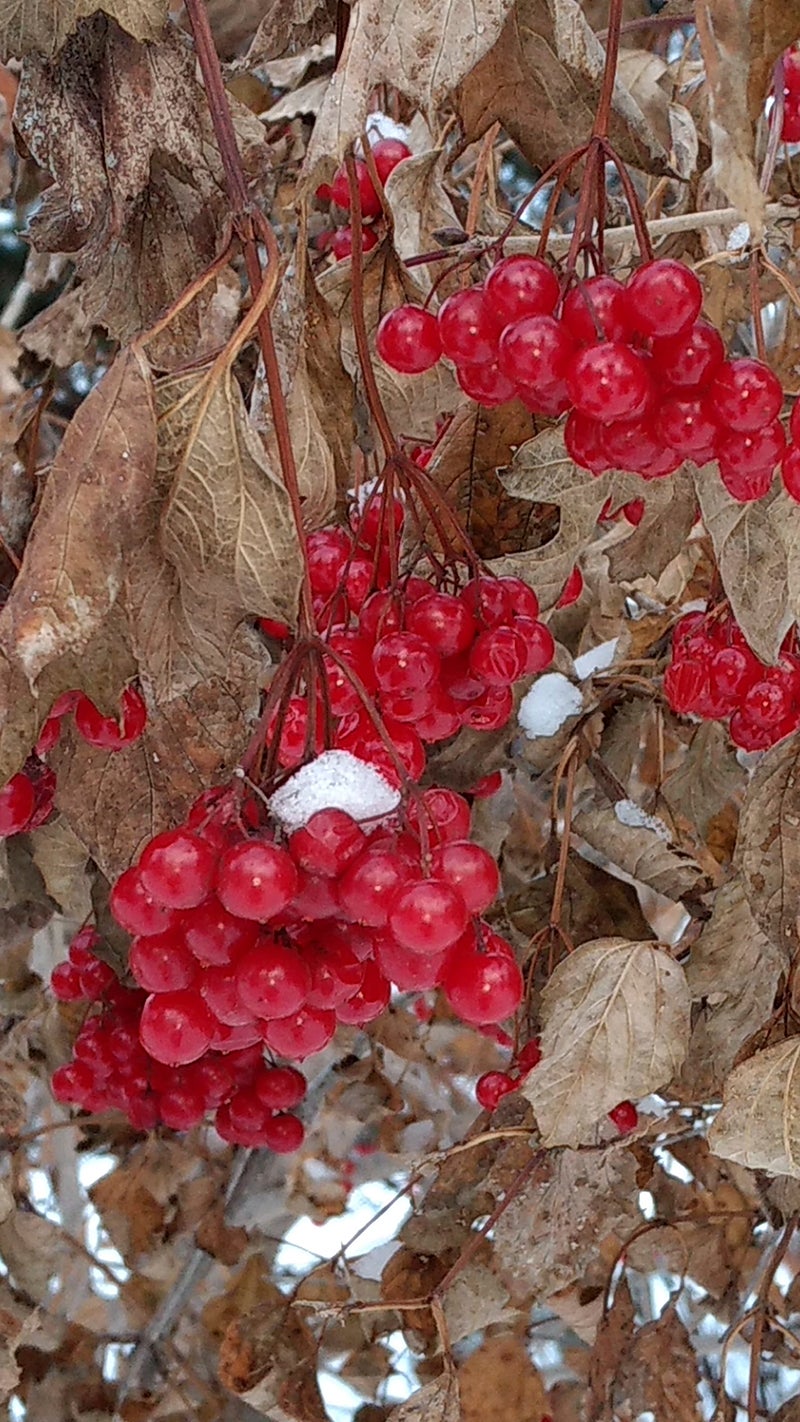Shelley Pederson: There are plenty of plants to help the birds
Published 9:00 am Saturday, December 28, 2019

- Arrowwood viburnum. - Shelley Pederson/Albert Lea Tribune
Perennial Buzz by Shelley Pederson

Shelley Pederson
“I heard a bird sing
In the dark of December
A magical thing
And sweet to remember.
‘We are nearer to Spring
Than we were in September,’
I heard a bird sing
In the dark of December.”
— Oliver Herford
The winter garden can be lovely in its own right. I like to keep my garden rather untidy in the winter — leaving the seed heads on my ornamental grasses, sedums and other perennial flowers. By October, I stop dead-heading my roses and let the plump hips set. The berries of my three viburnums are a bright, cheery red. The persistent fruit of the crabapples will soon be a sweet treat for the wild birds.
One of my pleasures is watching and listening to wild birds. I have tried to plant trees and perennials that help feed wild birds throughout the season. If you have room for viburnum (high bush cranberries), they are stunning in the garden or as a windbreak. Neal and I had gone to the Iowa State Arboretum (a must see) near Ames, Iowa, when the kids were young. A large portion of the arboretum was dedicated to viburnum. It was fall, and the leaves were a stunning red and the bushes were packed with berries. Fortunately, there are small varieties, like Blue Muffin and Cardinal Candy, for those who have less room.
Viburnum bushes are hardy to zone 2. They grow in most soil types, but it needs to be able to drain. They take full sun and can range from 3 feet to 15 feet tall. In the spring they bloom a mass of white, frothy, flowers that are mildly fragrant. It is quite a sight. Then red, orange or bluish berries set all summer. In the fall they turn a brilliant deep red. The berries usually last the winter. It seems the hard freezes make them tastier for the birds. If berries make it to spring, the robins will clean them up. Two of my favorites are Arrowwood and Onondaga they are a spectacular 8’ feet tall. The Arrowwood was used by the Native American to make arrows, thus the name.
Ornamental grasses provide seeds that the chickadees and smaller songbirds strip off and hide in during snowstorms. The dense grass protects the wildlife from harsh winds and blowing snow. Karl Foerster and Miscanthus sinensis are two grasses that do well in the Minnesota garden. Many Miscanthus are a zone 5. I have had very good luck with them; they are just very late to break dormancy. They are well behaved in the garden and have large seed heads. Native grasses like Indian grass and Bluestem look lovely planted together, if you have the room for some naturalizing.
I keep a bird feeder stocked with sunflower chips all winter, along with an extra-large suet holder that I can squeeze five cakes in, or a pretty good chunk of fat. I like the sunflower chips because they don’t make a mess. I also don’t have to fill the feeder as often. There is also a high energy food that I mix in with it during January and February. The high energy food has some dried fruit, peanuts and suet chunks in it, that I think helps during the deep freeze. I know some of you will shutter, but I also feed the squirrels. I get a kick of them and so do my Dachshunds.
No matter your yard, there are plenty of plants that help our feathered friends. Ask your local nursery person for suggestions for your space. We share this world with the birds and the bees, and it is important that we as humans honor their space so generations to come can hear their music and see the beauty.
Shelley Pederson is a perennially busy master gardener, lover of nature and student of life.



